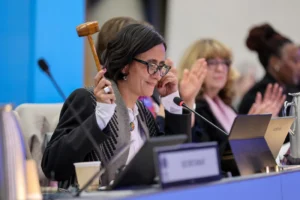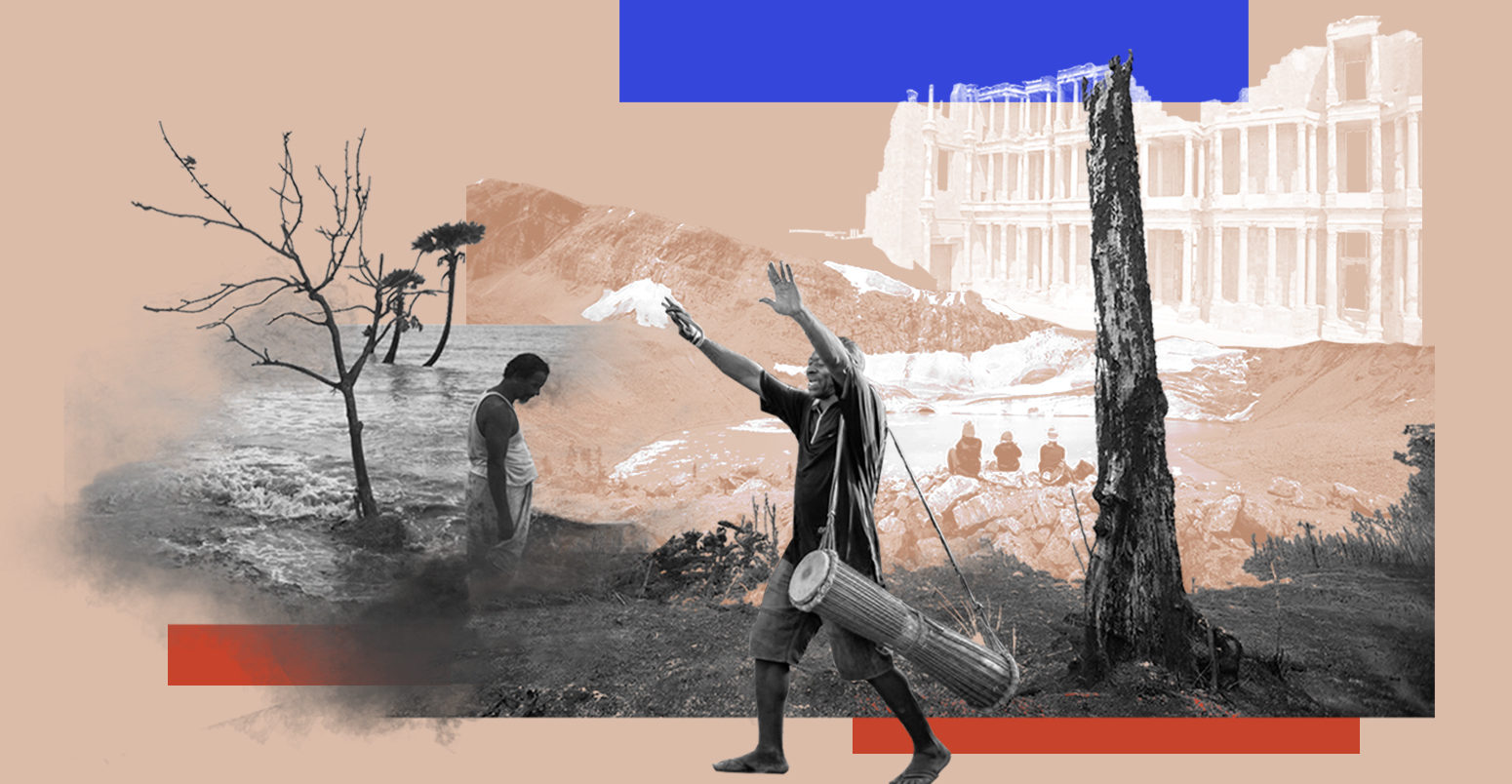
Loss and damage: What happens when climate change destroys lives and cultures?
Multiple Authors
09.28.22Multiple Authors
28.09.2022 | 8:00amHigh in the Peruvian Andes, there is a glacier whose disappearance has been linked to the departure of the gods.
In the belief of the Quechua people, Mount Ausangate is a powerful god of the landscape and the decline of the glacier that sits atop it is a sign of the “wrath of the deity”. The glacier’s retreat has also put a stop to the centuries-old practice of collecting small blocks of ice during an annual pilgrimage, which are thought to have healing properties when consumed.
- Q&A: Should developed nations pay for ‘loss and damage’ from climate change?
- Timeline: The struggle over ‘loss and damage’ in UN climate talks
- Loss and damage: What happens when climate change destroys lives and cultures?
- COP27: Why is addressing ‘loss and damage’ crucial for climate justice?
- Webinar: Will ‘loss and damage’ be the defining issue at COP27?
This is just one example of how climate change is irrevocably altering the lives, traditions and cultures of groups across the globe. There are many others, ranging from the threat of sea level rise to world heritage sites from Venice to Madagascar, through to the emotional toll caused by the worsening of extreme weather events from Australia to Myanmar.
Such impacts are one aspect of “loss and damage” – a term used to describe how climate change is already causing serious impacts for people, from deaths through to damage to homes.
Across the world, there is a burgeoning movement calling for big emitters to pay vulnerable groups for the loss and damage they have incurred as a result of climate change.
But this movement faces a burning question: how can “non-economic” losses – such as the loss of sacred places – ever be paid for?
In this article, Carbon Brief examines the impacts of “non-economic” – or “intangible” – loss and damage in regions across the world, and asks experts to explain whether such losses can ever be accounted for.
- What is ‘intangible’ loss and damage?
- Loss and damage in South Asia: Glacier melt in the Himalayas
- Loss and damage in Australia: The mental health toll of bushfires
- Loss and damage in Africa: World heritage sites at risk from sea level rise
- How can ‘intangible’ loss and damage be accounted for?
What is ‘intangible’ loss and damage?
“Loss and damage” is a term used to describe how climate change is already causing serious and, in many cases, irrevocable impacts around the world – particularly in vulnerable communities. At UN climate talks, the term is often used by groups arguing for big emitters to be held responsible for losses incurred in poorer regions, which are the least responsible for climate change.
Loss and damage can be caused by immediate climate impacts, such as more intense and frequent extreme weather events, as well as impacts that gradually worsen over time, such as sea level rise and the retreat of glaciers, says Ineza Umuhoza Grace, a Rwandan activist and director of the Loss and Damage Youth Coalition (LDYC). She tells Carbon Brief:
“We are losing infrastructure, losing our agricultural land – and losing what we can call a hope of having sustainable economic growth and a future for everybody.”
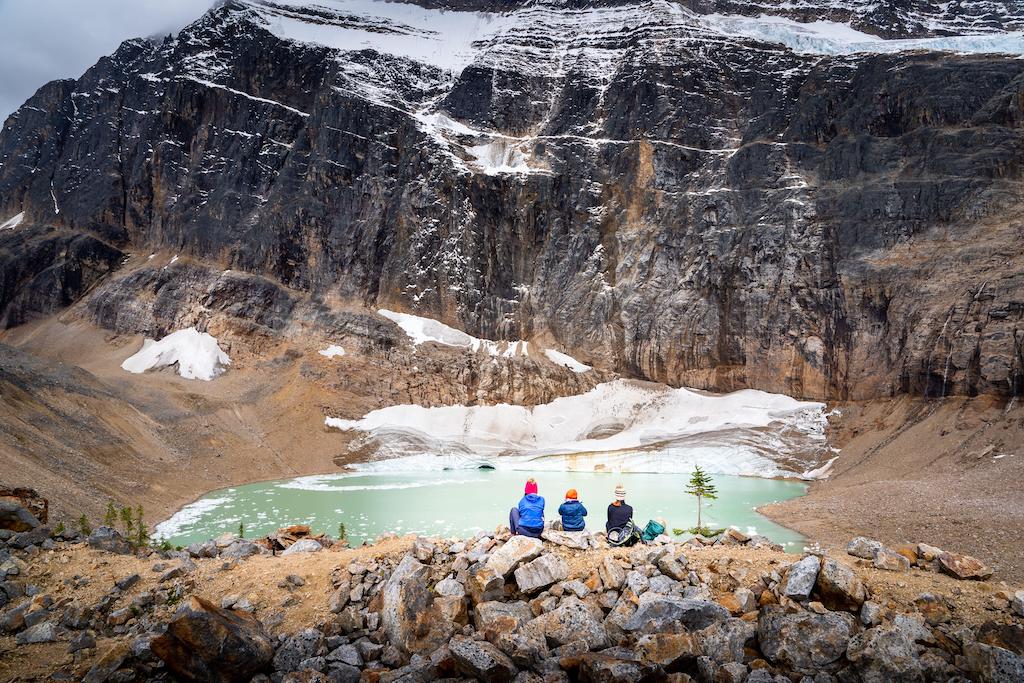
According to the most recent assessment of climate impacts from the Intergovernmental Panel on Climate Change (IPCC), loss and damage can broadly be split into two categories: economic losses involving “income and physical assets”; and non-economic losses, which include – but are not limited to – “mortality, mobility and mental wellbeing losses”.
Non-economic loss and damage is often also referred to as “intangible” loss and damage. According to a scientific review published in 2019, the term “intangible” is used because non-economic losses “cannot and perhaps should not be quantified”.
This review offers a much broader definition of what constitutes intangible loss and damage from climate change.
It says that intangible loss and damage can result from climate-induced harm to:
- Biodiversity and species
- Culture, traditions and heritage
- Human dignity
- Ecosystem services or habitat
- Human life
- Human mobility
- Human identity
- Knowledge and ways of knowing
- Mental and emotional wellbeing
- Order in the world
- Physical health
- Productive land
- Self-determination and influence
- Sense of place
- Social fabric
- Sovereignty
- Territory
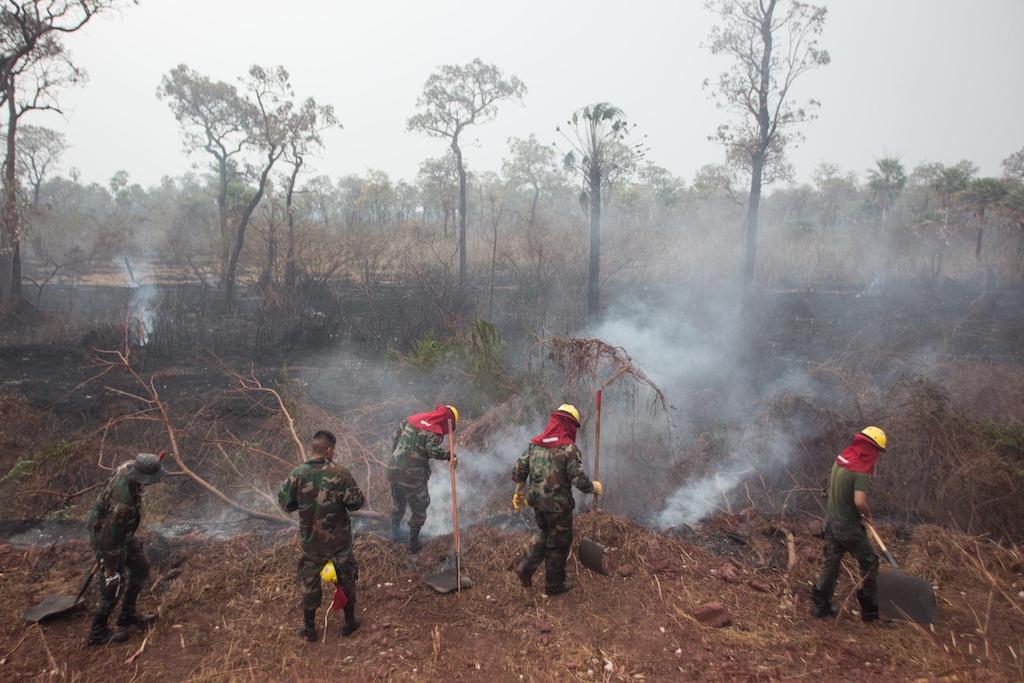
In many ways, intangible loss and damage has become a catch-all term for any type of loss that cannot be valued in monetary terms, says Prof Neil Adger, a researcher of environmental geography at the University of Exeter. He tells Carbon Brief:
“We’ve got a category of things that are economic – and then we’ve got a category of things that we should really care about. Economics looks pretty unimportant if there’s a risk you’re going to lose your life.”
Despite its importance to people, intangible loss and damage has historically received less attention from researchers than economic losses from climate change, according to the IPCC. Its most recent climate impacts report says:
“Economic losses and damages from climate change are often assessed and reported after disasters or within crises, however, non-economic losses from climate change are often overlooked.”
The role of intangible loss and damage in worsening inequalities among vulnerable communities is a particularly overlooked area, the report adds:
“Particularly in low-income and most vulnerable regions, it is not the absolute economic loss, but the combination of economic and especially non-economic losses that need to receive higher attention.”
The importance of intangible loss and damage has also historically been neglected at UN climate talks, when compared to economic losses, adds Sandeep Chamling Rai, a senior advisor at WWF and an expert on the UN climate change non-economic loss and damage taskforce. He tells Carbon Brief:
“One of the biggest issues…that is missing and lacking is that loss and damage is basically only [looked at] from a monetary point of view, but there are losses and damages which cannot be quantified in monetary terms, in terms of loss of ecosystems, loss of cultural heritage, loss of life.
“As temperatures increase, we’re seeing much more non-economic losses. If we look 10 years down the road, maybe the non-economic losses pile will be much more severe compared to economic losses.”
One reason why intangible loss and damage may have been “overlooked” is that it is often difficult to quantify and track with western scientific measures, explains Prof Lindsay Stringer, director of the York Environmental Sustainability Institute at the University of York and a lead author on the IPCC’s most recent climate impacts report. She tells Carbon Brief:
“A lot of cultural things aren’t written down. We see this a lot with local traditional knowledge and Indigenous knowledge. For example, a lot of African Indigenous knowledge is passed down through storytelling, dance and song. So often we don’t know what we’re losing.”
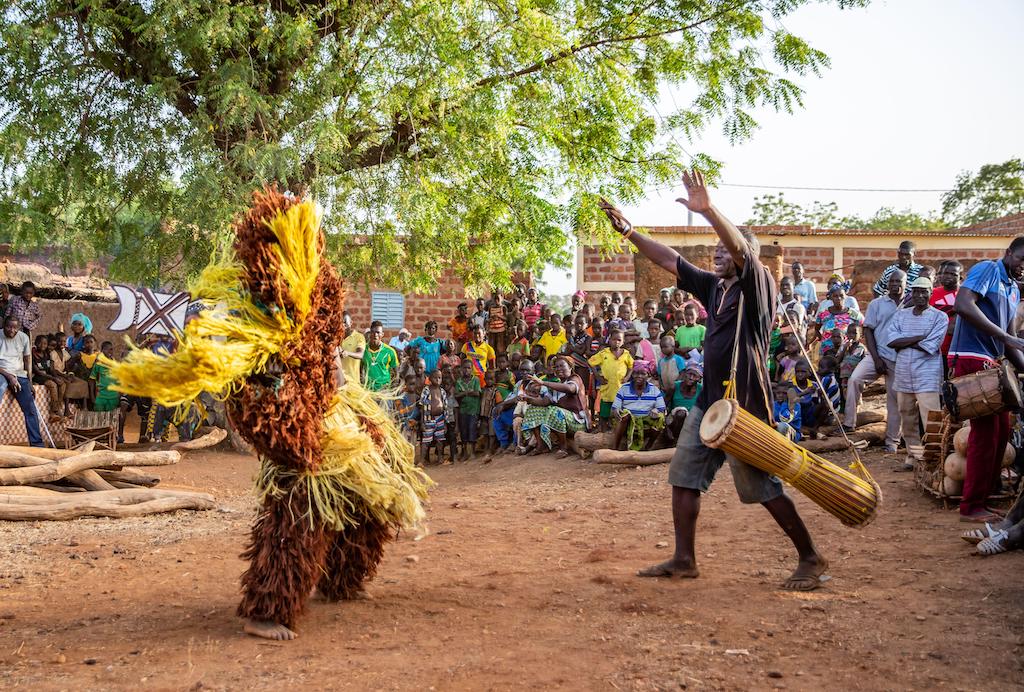
Loss and damage in South Asia: Glacier melt in the Himalayas
From 2010 to 2019, the world’s glaciers collectively lost more mass than in any other decade since the beginning of the observational record, said the IPCC (pdf) last year with very high confidence. The report warned that glaciers will continue to lose mass at least for several decades even if global temperatures are stabilised.
For the Khumbu Sherpas of the Mount Everest Himalayan region, glaciers are places where spiritual beings reside. This means that it is vitally important to make sure they are not polluted. They call the world’s tallest mountain Jomolangma and believe it to be the abode of Jomo Miyo Lang Sangma, the mother goddess of “inexhaustible giving” who rides on a red tiger and holds a bowl of fine food in her hand.
“There are people who look at the mountains and see only the ice and snow and glaciers. They don’t see the people who actually live there,” says Dr Pasang Sherpa, an Indigenous anthropologist from Nepal’s Khumbu Sherpa community in Nepal who teaches at the University of British Columbia.
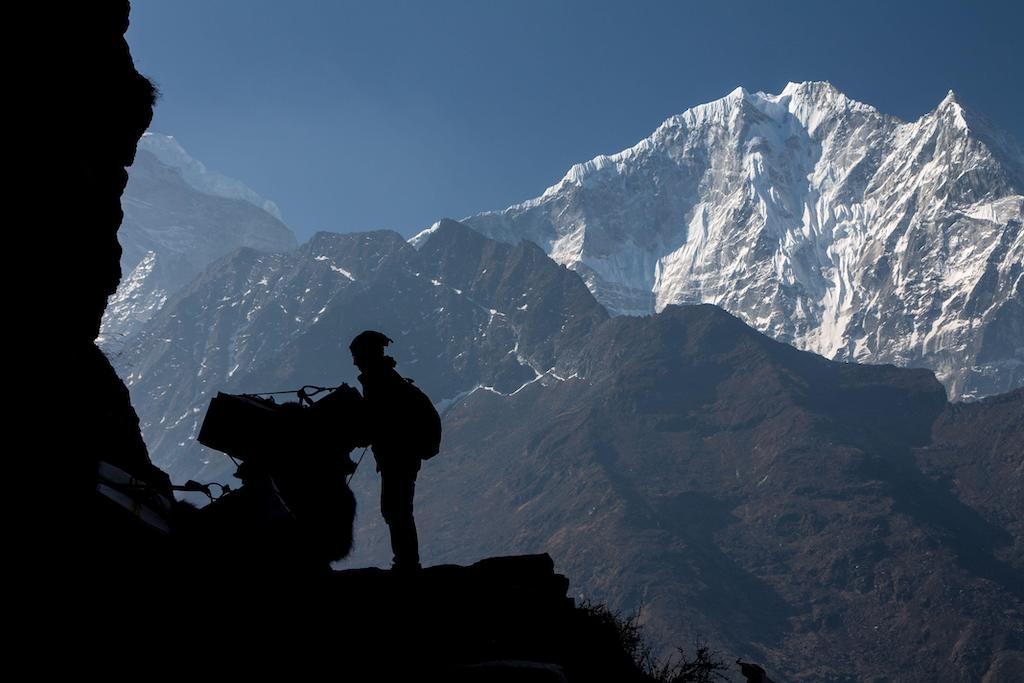
Her community draws its name from Khumbu, which comes from Khumbila Tsen Gylapu, the guardian deity of the Khumbu valley.
Khumbu also lends itself to the Khumbu glacier, the highest in the world at an average elevation of almost 8,000 metres above sea level. The glacier, which cascades down from the slopes of Mount Everest on its main climbing route, is retreating rapidly, losing ice at the rate of nearly two metres a year, according to research published earlier this year.
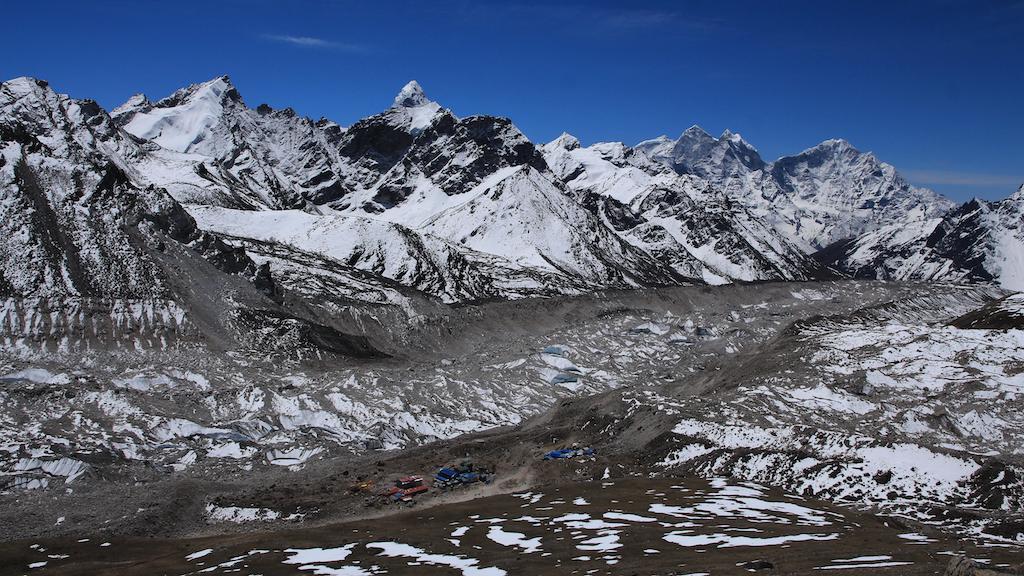
Today, when extreme weather or other disasters strike, locals perform special prayers and rituals. In 2008, after Nepal experienced one of its worst droughts, a local Vajrayana Buddhist abbot buried 1,300 sacred urns called Sachue Bumpa in different places throughout the region to “appease local duties and protect the region from any harm”.
Dr Sherpa was one of the authors of the cross-chapter on mountains in the latest IPCC report on climate change impacts, but is unsure of the impact of her contribution. She tells Carbon Brief:
“If we were writing with Himalayan and mountain communities in mind, this would be a very different report. We would be talking about how a glacier is not a separate entity, but a connected mountain system that is all sacred to the people who live in this region. We would be talking about how climate change is changing weather patterns, in unpredictable, unprecedented ways: tourists are not able to fly to a very heavily tourist-dependent region. We are seeing the tree line going higher and higher because it’s warmer and warmer. And we don’t know the impact of all of this because we are so caught up in the melting of glaciers.”
While Everest draws international climbers for the challenge of scaling the world’s tallest mountain, Mount Kailash draws “at least a million” people to its slopes because of its spiritual significance – especially from mainland China and India. It is considered sacred in four religions: Buddhism, Hinduism, Jainism and native Bon.
“Kailash is not the biggest mountain in that area – there are taller mountains – but because of its shape, its look, the sense of spirituality it inspires…if it loses its snow, would it still be Mount Kailash?” asks Janita Gurung, an ecologist who works at the International Centre for Integrated Mountain Development (ICIMOD) in Kathmandu, Nepal.
Kathmandu-born but hailing from the Indigenous Gurung community, Janita is the coordinator of the Kailash Sacred Landscape Initiative, which studies the impact of climate change on a mountain ecosystem revered by millions.
Gurung uses the term “cultural ecosystem services” to describe non-economic losses and damages or the “intangible services that ecosystems of biodiversity provide”. She believes that “it’s a very western concept to equate biodiversity and nature with economics when nature has intrinsic value we cannot economise”, telling Carbon Brief:
“For us, in the mountains, it is not just economic possessions that are important, it’s also the karmic accumulation that you have at the end of your life that’s going to decide how you die or how you feel about dying, right? And going on pilgrimages, doing good things – that is what’s going to contribute to that.”
The Limi Valley in western Nepal’s high-altitude Humla district borders Tibet and is a gateway to the Kailash-Mansarovar region. For six months of the year, the valley is blanketed in snow and cut off from the mainland, meaning its residents – known as the Limey people – can only meet outsiders and stock up on food during the other six months.
At an altitude of 3,800m, Halji – the largest village in Limi – houses the 1,000-year old Rinchenling monastery and 300 households. The monastery, which contains ancient Tibetan Buddhist texts and artefacts, lies in the path of a glacial lake hidden behind a hanging glacier. The lake has flooded six times between 2004 and 2011.
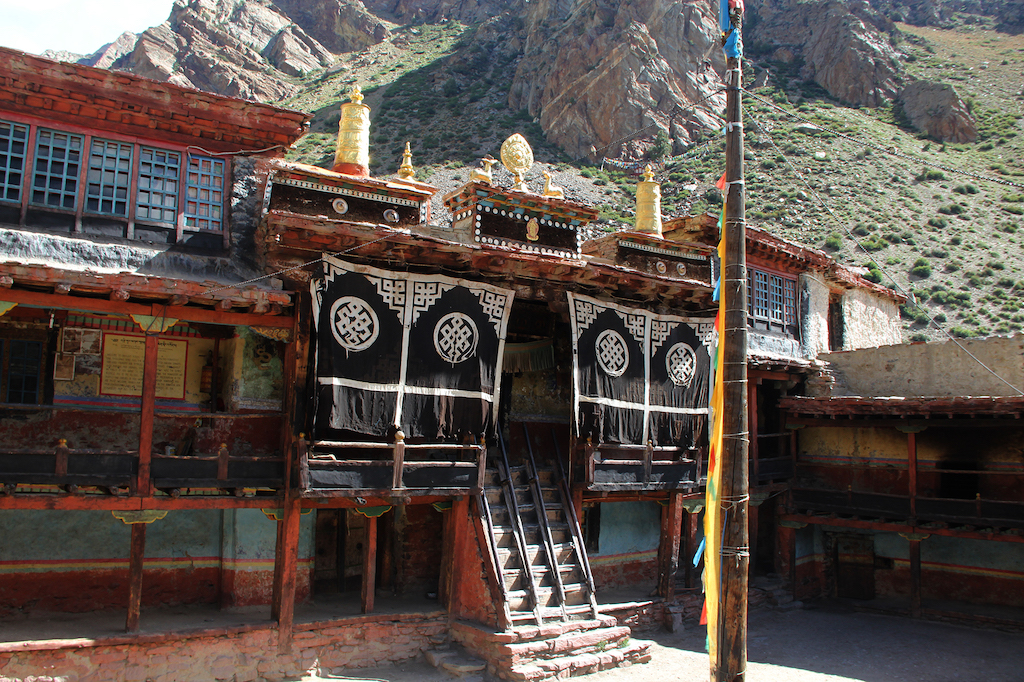
According to ICIMOD’s 2019 Hindu Kush Himalaya (HKH) Assessment (pdf), Himalayan glacier volumes are expected to decline by up to 36% by 2100 in a 1.5C world and up to 64% in a very-high emissions scenario.
Since the 1990s, glacial lakes – swelled by meltwater – have shown “a clear increase both in number and in area”, with several being “potentially hazardous”, the report warns. These lakes form behind natural dams created by debris pushed along at the front of glaciers and left behind as glaciers retreat. They are the source of potentially catastrophic “glacial lake outburst floods” (GLOFs). As of 2000, the HKH has witnessed more than 33 identifiable GLOFs and the number is increasing.
If a GLOF destroyed the Rinchenling monastery, it would be irreplaceable, says Janita:
“That monastery keeps this community together. Once that flood takes away that monastery, we [humanity would] have lost this heritage, but for the community, if there’s no monastery to keep them there, they’re going to lose their sense of place.”
According to Sherpa, accounting for intangible loss and damage in sacred Himalayan glacier regions is hard, but it is not up to outsiders’ or parachuting scientists to do so.
“There’s no way of compensating for the loss of a sacred site. It is up to the community to decide what is a fair monetary value of compensation. And I think for the rest of us to live with the discomfort of acknowledging our complicity in the loss of that sacred site.”
Loss and damage in Australia: The mental health toll of bushfires
“For me the biggest loss was the loss of place, which is more than just the loss of home,” says Jo Dodds, a poet, writer and local councillor from just outside Tathra, a coastal town in New South Wales, Australia:
“It’s the loss of knowing where you are, locating yourself in a landscape when so much has changed.”
From 2019 to 2020, Australia faced its most severe bushfire season on record. More than 30 people died in the bushfires, which burned a record amount of land in the east of the country from September 2019 to March 2020. Conservative estimates suggest more than one billion mammals, birds and reptiles also died in the flames.
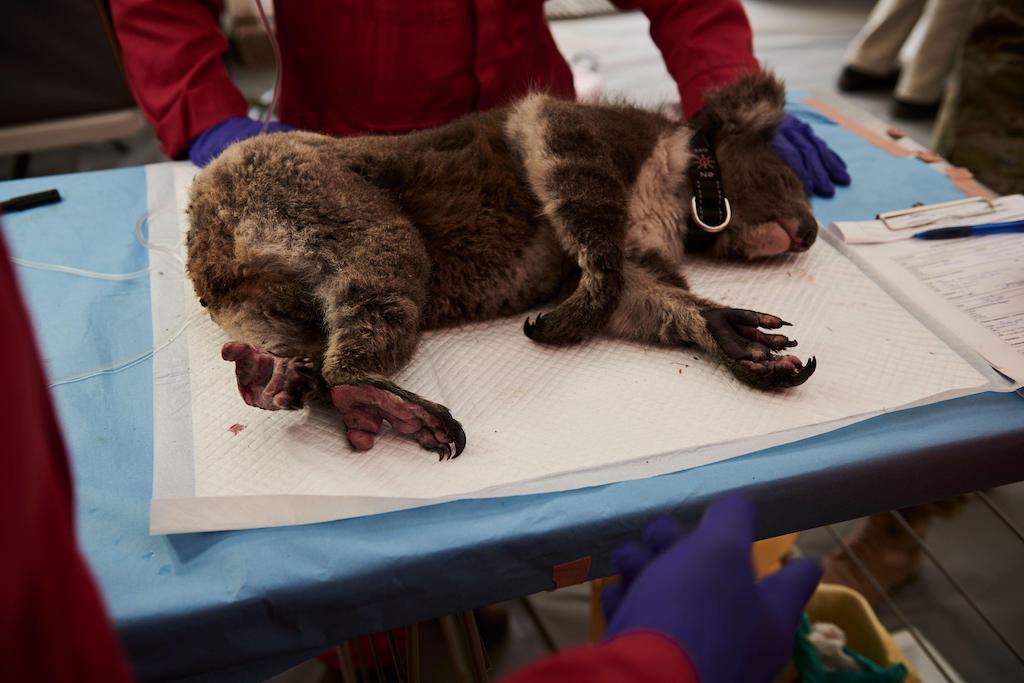
A rapid assessment published shortly after Australia’s bushfires found that the hot, dry weather conditions seen at the height of the disaster have become at least 30% more likely since 1900 as a result of human-caused climate change.
Nine people in Bega Valley Shire – the area where Dodds works as a local councillor – lost their lives in the fires. Dodds’ family were forced to evacuate. Her home narrowly escaped being burned down as the flames tore through her neighbourhood.
Tathra had already experienced a severe bushfire in 2018. That fire burned down a fifth of the houses in the town.
“After the fire that impacted me, it took me well over a year of going through an existential crisis of thinking: ‘What’s the point?’” Dodds tells Carbon Brief.
“I’d sit in my house and if I was sitting at my desk, I’d go: ‘What will this look like when it’s burning?’ The new staircase that we’ve just put in that cost us thousands of dollars: ‘That’s going to look amazing while it’s burning.’
“It was like this big shake up of realising that everything is ephemeral. Everything’s up for grabs. It wasn’t just the physical things. It was also my whole perception of my future and the things that I might do when I retire – none of that was accurate.”
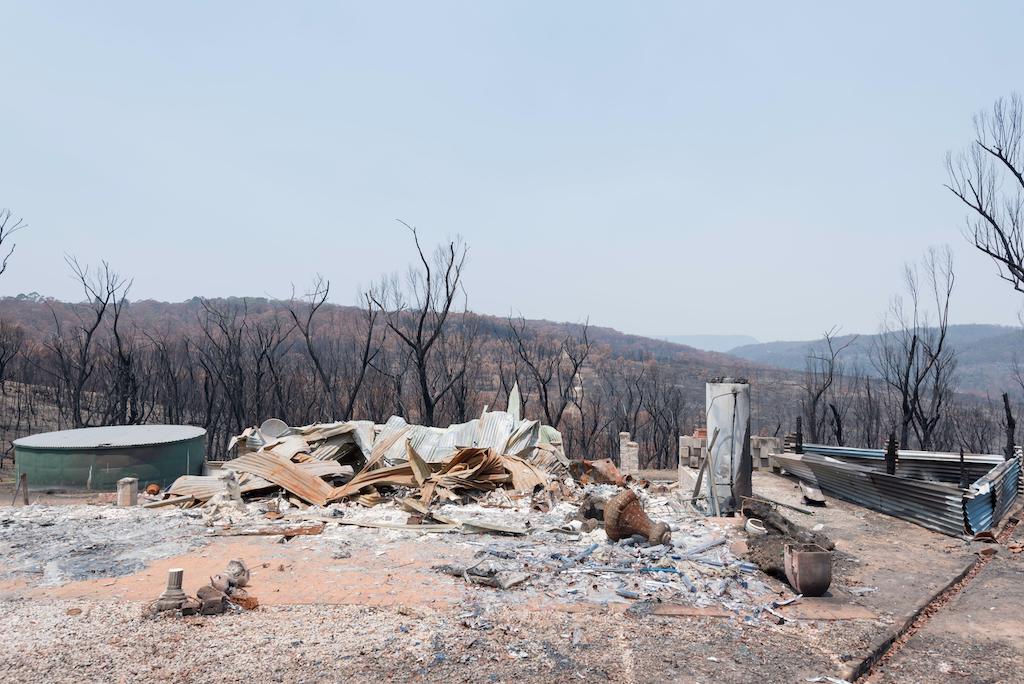
A scientific survey of more than 2,000 adults taken during the 2019-20 bushfires found that over half self-reported symptoms of anxiety, depression and problems with sleep – with women reporting these symptoms more frequently than men.
The impact of climate change on the frequency and severity of extreme weather events affects mental health in complex ways, says Prof Helen Berry, a psychiatric epidemiologist and inaugural honorary professor of climate change and mental health at the University of Sydney. She tells Carbon Brief:
“Bushfires have their own unique circumstances, but a lot of the ways in which being caught up in a fire that might affect your mental health are exactly the same as being caught up in a flood. You may fear for your life or you may fear for the life of someone you care about or you may lose your job.”
She adds that many wealthy countries, including Australia, should invest in more forward-planning measures to deal with the rising health toll associated with extreme events.
“The approach that wealthy countries tend to take is what we call a ‘wait and treat approach’ – so you don’t worry too much about trying to prevent something from happening, you wait until someone’s ill and then you try to treat them,” she says, adding:
“That’s very much about mopping up the floor while you haven’t turned the tap off. You really need to be looking at what’s happened a long way before that to try to understand what you can do so that people are much less likely to be affected by a fire-weather disaster if it happens and, if they are affected, they’re better resourced for dealing with it.”
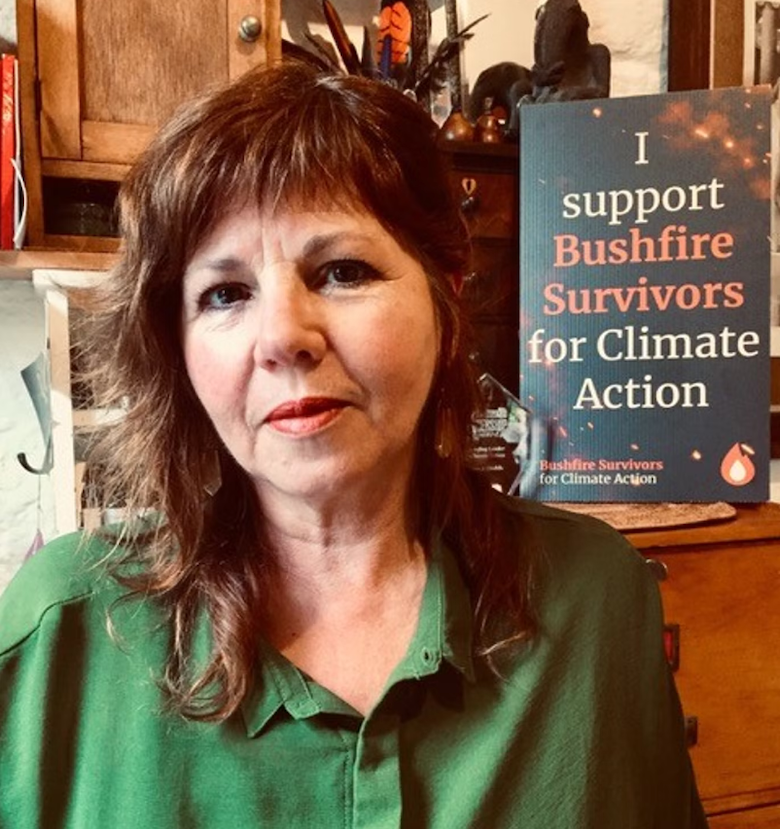
For Dodds, deciding to take action against climate change proved a positive way to improve her mental health. She is the founding president of Bushfire Survivors for Climate Action, an advocacy group calling for the Australian government to take stronger measures to tackle climate change.
However, she believes Australia is still far away from coming up with a way of accounting for the intangible losses associated with bushfires.
“We’re still not at the point where even the economic loss – which is measurable – is really being accounted for,” she says:
“We need to recognise that we too are damaged when we damage our environment, in so many ways. But yeah, I think we’re still not there.”
Loss and damage in Africa: World heritage sites at risk from sea level rise
From the ruins of first-century human settlements to buildings used during the slave trade, Africa’s shoreline is dotted with world heritage sites that keep a record of history – “both good and bad”, says Dr George Abungu, an archaeologist from Kenya. He tells Carbon Brief:
“They contain historical records that we sometimes don’t even have in writing. They contain sites or memories that represent a very significant part of human life. They’re like textbooks or archives. And, so, when they go, it all goes.”
A study published in February found that the number of African heritage sites at risk from sea level rise could triple by 2050. At present, 56 natural and cultural heritage sites across Africa’s coastline already face risks from flooding and erosion exacerbated by rising seas. Under a scenario where emissions rise at a “medium” rate, this figure is projected to hit 191.
Throughout history, Africa’s coastline has played host to the rise and fall of multinational settlements and centres of trade, Abungu says:
“The coast of east Africa and the islands in the Indian Ocean are very important because these were nodes of cultural contact. For example, you have major settlements, beginning from around the first century AD, springing up all along the east African coast and subsequently leading to the formation of what is now called the Swahili settlements.”
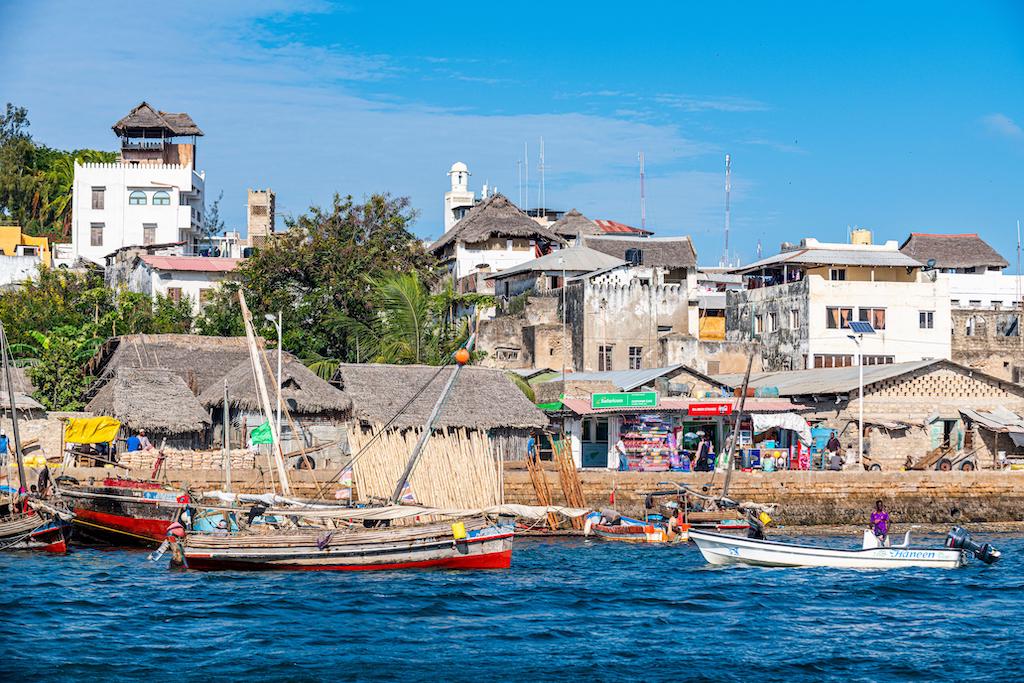
Now, it is these coastal sites that could be the first to succumb to sea level rise, which has occurred at a faster rate than the global average around Africa over the past three decades, he says:
“This evidence that gives us a glimpse into the past is threatened by sea rise and they are being eroded. Kilwa is a world heritage site and it’s been undergoing quite a bit of sea erosion. Zanzibar, they have built sea walls.”
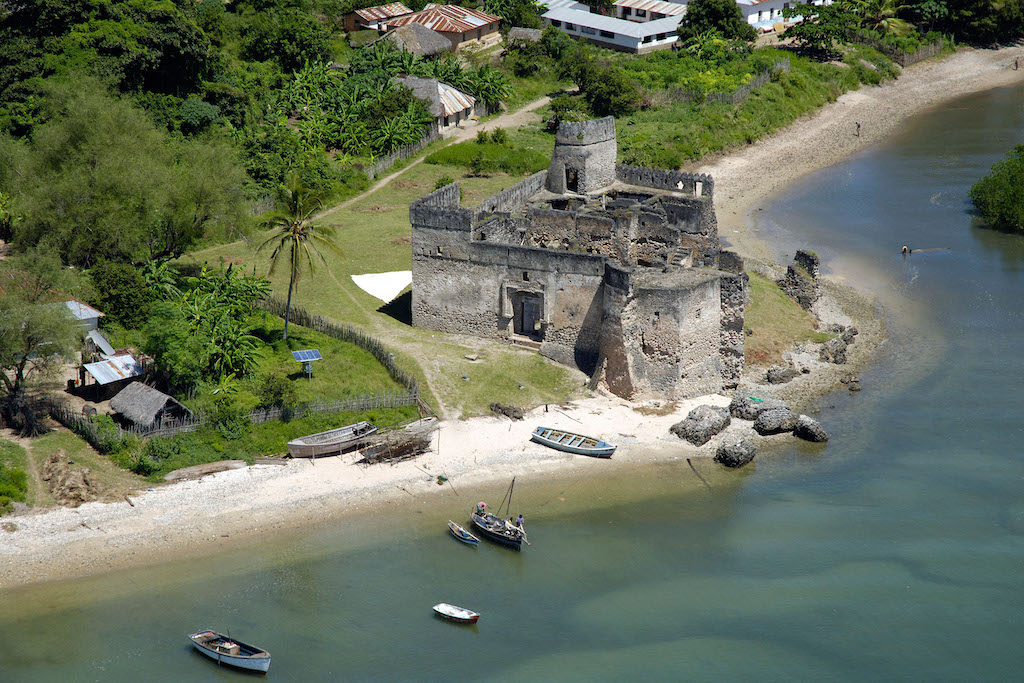
The research, published in Nature Climate Change, was the first to comprehensively examine how sea level rise could affect African coastal heritage sites. It considers 284 heritage sites in 38 countries.
As part of the study, the authors combined maps of flooding projections with those showing possible shoreline change across Africa. They examined threats to heritage sites under two scenarios: a “medium” scenario where global greenhouse gas emissions continue to rise before levelling off in the second half of the century (“RCP4.5”) and a “high” scenario where global greenhouse gas emissions continue to rise until 2100 (“RCP8.5”).
For each heritage site, the researchers estimated the extent of area exposed to “100-year” coastal flooding and erosion events at present, as well as in 2050 and 2100. (“100-year” is a term used to describe an event that is so severe that at present it only has a 1% chance of occurring in a given year.)
The map below shows the results for each heritage site. On the graphic, colour illustrates the percentage of the site’s total area that is exposed to coastal flooding and erosion (yellow represents less than 25%; orange represents less than 50%; purple represents less than 75% and dark blue represents more than 75%). Meanwhile, grey is used to show unaffected sites.
African heritage sites at risk from climate change. Data source: Vousdoukas et al. (2022). Map by Tom Prater for Carbon Brief.Among its findings, the research showed that global action against climate change could significantly cut the number of African heritage sites at risk in the future, says study author Dr Nick Simpson, a postdoctoral research fellow at the African Climate and Development Initiative at the University of Cape Town. Earlier this year, he told Carbon Brief:
“We showed if climate change mitigation successfully reduces greenhouse gas emissions from a high emissions pathway to a moderate emissions pathway, the number of exposed sites can be reduced by 25% by 2050. This would be a significant saving in terms of loss and damage to heritage from climate change.”
It is important to recognise that, both at present and historically, Africa has play a minor role in driving climate change, says Abungu:
“This is a global phenomenon and our contribution is very little, it’s the big economies such as Europe, North America, China [and] India. These people carry the responsibility of causing the problem, but they haven’t given us the resources to address these issues.”
He tells Carbon Brief that he believes large emitters should pay compensation, in part to pay for the sea walls that are being built to protect coastal heritage sites in Africa. However, he adds that sea walls are unlikely to be a “long-lasting solution”.
“I think, in the long term, they will do us good by themselves controlling their emissions that are contributing to climate change. [That is] the best that they can do for us”.
How can ‘intangible’ loss and damage be accounted for?
From cultural losses to mental health impacts and biodiversity decline, the impacts of intangible loss and damage are already vast, far-reaching and difficult to quantify.
As the world debates how it should respond to climate change, if and how such losses can be accounted for remains a crucial question.
At UN climate talks, this issue is currently being investigated by the non-economic loss and damage taskforce, says WWF’s Chamling Rai:
“The whole intention of this expert group is to understand what non-economic losses are, to educate what they mean and to see what are the breakthroughs we can come up with in terms of minimising some of the non-economic losses and damages.”
One key way to address intangible loss and damage should be to take action against rapidly rising emissions, he says:
“The loss of ecosystem services, loss of cultural heritage and loss of human life are some of the critical issues that you can’t really quantify from a monetary point of view – but that is happening and that needs to be accounted for. To prevent those losses and damages, we need to act more on the mitigation front and we need to build more climate resilience.”
Others attempt to relay the value of or account for at least some of these losses. For instance, ICIMOD’s Janita Gurung often takes policymakers into the harsh Kailash sacred mountain landscape to experience for themselves the value of what is being lost. She says:
“Unfortunately, politicians recognise these values when you put an economic value to it. So we equate it with tourism. Let’s say, a place like Mount Kailash: we say that the heritage is something we sell in terms of tourism, and then climate change would mean a loss of tourism income. So that’s sadly one of the things, ultimately, we tend to do again: to put an economic value to it to sell to policymakers.”
For the “extreme” cases of intangible loss and damage – such as when people lose their territories as a result of rising seas – countries must agree on specific new interventions, she adds:
“Migration is also one of the bigger issues that we see if territory is lost. In these cases, we are asking, will there be an international mechanism that will help displaced people? And will the UNFCCC [the UN climate body] be able to give that kind of direction?”
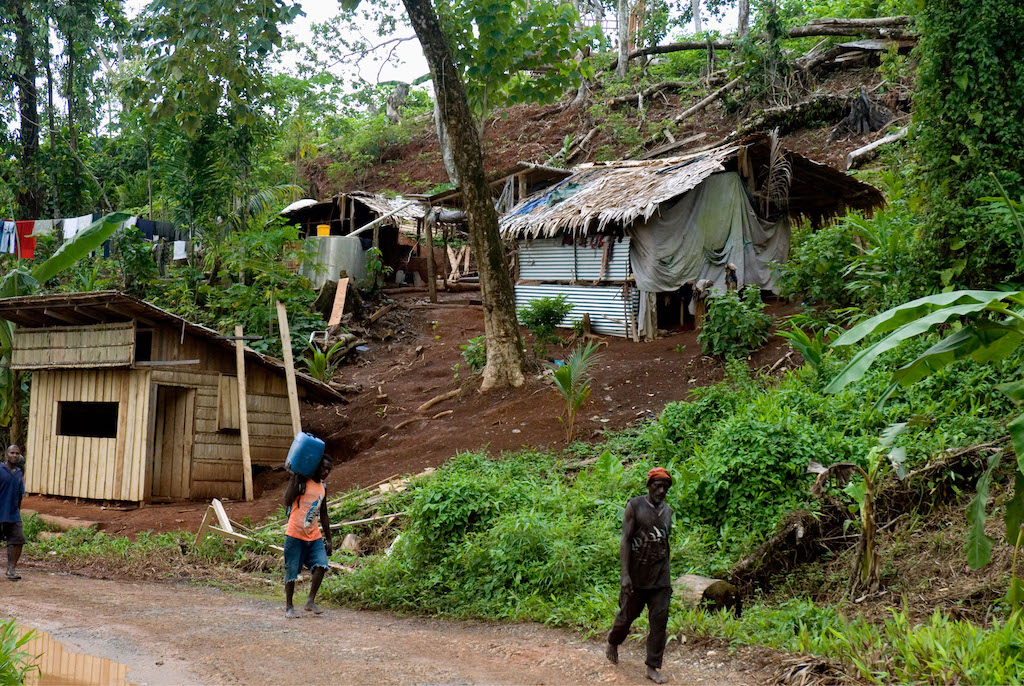
Chamling Rai is part of a movement of NGOs and developing world countries that are calling for a loss and damage finance mechanism to be established to help vulnerable people cope with the rising costs of climate change.
This finance mechanism could directly address economic loss and damage, such as the loss of property and land from more intense extreme weather events.
However, for some types of intangible loss and damage, there may still be a case for victims to receive financial compensation – even if their loss extends beyond monetary value, says Dr Linnéa Nordlander, a researcher of climate change and human rights law at the University of Copenhagen. She tells Carbon Brief:
“A lot of what is litigated in human rights law is intangible and things that can never be made good. Torture victims, for example. They’re still compensated. It’s never going to erase what has happened, but it is a symbolic recognition of what they have experienced and what someone is responsible for.”
Prof Dale Jamieson, founding director of environmental studies and a professor of philosophy and law at New York University, agrees that there could be a case for victims of intangible loss and damage to receive compensation. He tells Carbon Brief:
“From my point of view, there are values that simply cannot be compensated for. So what do we do in the face of incommensurate values that are lost because of someone else’s action? For example, by emitting carbon? Well, one thing we sometimes do is we do provide monetary transfers, but we don’t pretend that this is a full compensation for the loss. We do it as a gesture of goodwill and as a taking of responsibility.”
“Now how you set that becomes extremely complicated and extremely controversial. Because, symbolic meaning doesn’t necessarily mean a lot of money.”
Another point of complication is it is difficult to determine what kind of intangible losses should be compensated in a world where cultural and living practices are constantly evolving, he adds:
“Almost everything that anybody does at scale forecloses opportunities and produces losses and the possibilities of ways of life that simply can’t be maintained in the future.
“For example, because somebody decided to computerise the economy, it’s just not possible for me to live in a computer-free society. Because somebody builds a highway from point A to point B, I can no longer enjoy a particular walk that I once took.”
An additional way of addressing intangible loss and damage could be through formal recognition of liability from large emitters, says Nordlander:
“There are things such as apology and recognition of harm, which can be quite useful for victims when it’s something that cannot be replaced – just recognising that this is something that is caused by climate change and that the international community or certain countries are more responsible for that.”
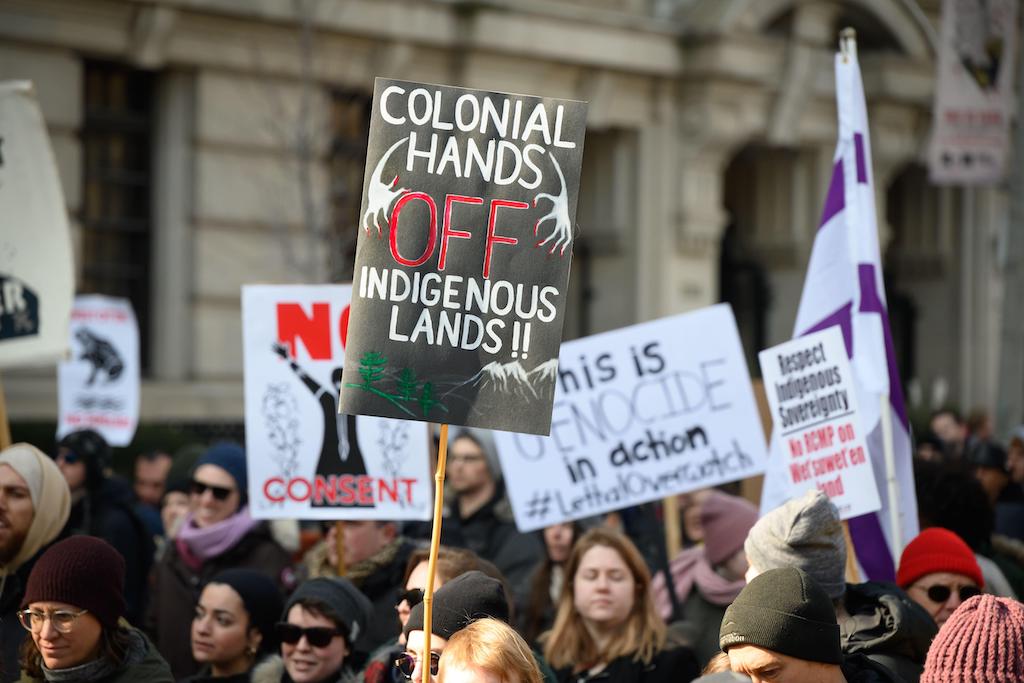
Such measures are already used to acknowledge the intangible losses associated with other global-scale issues, such as colonialism, says Jamieson:
“What we’re doing to glacier-worshipping people by putting carbon in the atmosphere is not really different in kind to what’s happened millennia past with colonisation and the destruction of Indigenous peoples’ native ways of life, using other means than carbon.”
However, it should be noted that most wealthy nations have historically refused to acknowledge their culpability for loss and damage caused by climate change, he adds:
“Where this becomes complicated is, of course, most of the countries of the [global] north are not going to acknowledge responsibility or liability. But it does seem to me there is this weaker notion of acknowledgement a payment can express and symbolise that could be important.”
-
Loss and damage: What happens when climate change destroys lives and cultures?





